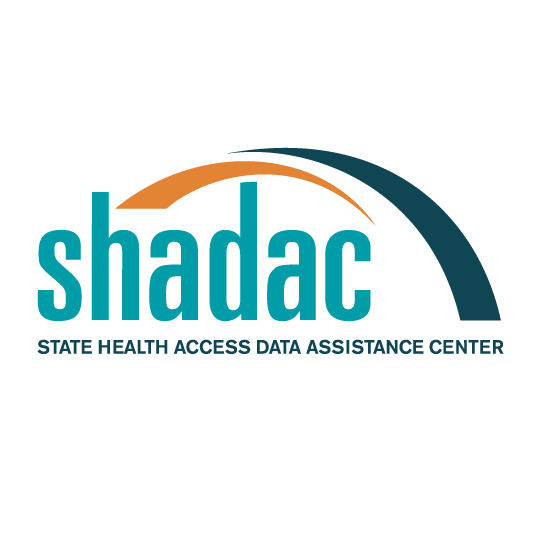Blog & News
Now Available on State Health Compare: 12 Updated and New Measures on Health Insurance Coverage, Cost of Care, Public Health, Health Behaviors and Outcomes, and Quality of Care
August 10, 2020:SHADAC has published one brand new measure and updated eleven existing data measures with the latest available estimates on our State Health Compare site.
The new measure we’ve added is:
Adverse Childhood Experiences (ACEs)
This measure defines the percent of children (age 0-17) who report having experienced none, one, or multiple traumatic events, or adverse experiences, among categories of possibilities that include: (1) difficulty covering basic needs on family's income; (2) parent or guardian divorced or separated; (3) parent or guardian died; (4) parent or guardian served time in jail; (5) saw or heard parents or adults slap, hit, kick, punch one another in the home; (6) was a victim of violence or witnessed violence in their neighborhood; (7) lived with anyone who was mentally ill, suicidal, or severely depressed; (8) lived with anyone who had a problem with alcohol or drugs; and (9) treated or judged unfairly due to race/ethnicity. Percentages are available for years 2016-2017 and 2017-2018, and breakdowns include age, health insurance coverage type, education, poverty level, race/ethnicity, and number of ACEs reported.
The updated measures include:

Unemployment Rate
Available for all states from 2000 to 2019, this measure reports the seasonally adjusted rate of unemployment for all states.
Workers in Establishments that Offer Coverage*
Estimates for this measure calculate the percent of workers whose employer offers health insurance coverage to employees, and can be broken down by firm size. Full data is available from 2003 to 2019, and partial data is also available for 2002.
Average Annual ESI Premium*
This measure reports the average annual premium for private-sector workers who get health insurance through their employer. The measure is available for all states from 2003 to 2019, with partial data also available for 2002, and can be broken down by plan type (family or single).
Average Annual ESI Deductible*
This measure reports the average annual deductible for private-sector workers who receive a health insurance plan through their employer that has a deductible. The measure is available for all states from 2003 to 2019, with partial data also available for 2002, and can be broken down by plan type (family or single).
Employee Contribution to Premiums*
This measure reports the percent of annual premiums contributed by private-sector workers who get health insurance through their employer. The measure is available for all states from 2003 to 2019, with partial data also available for 2002, and can be broken down by plan type (family or single).
High Deductible Health Plans*
This measure reports percentage estimates for private-sector employees who are enrolled in high-deductible health insurance plans. High-deductible health plans are defined as plans that meet the minimum deductible amount required for Health Savings Account (HSA) eligibility ($1,350 for an individual and $2,700 for a family in 2019). The measure is available for all states from 2012 to 2019 and can be broken down by firm size.
Costs of Potentially Preventable Hospitalizations^
Estimates for this measure show the per-person costs of potentially preventable hospitalizations, which are hospital visits that research suggests could have been avoided by better access to high-quality patient care, such as care provided in doctor’s offices, clinics, or other settings outside the hospital. Data are available for all 50 states from 2009-2015, and 2016.
Adult Potentially Preventable Hospitalizations^
Estimates for this measure show the rate of potentially preventable hospitalizations per 100,000 adults. Potentially preventable hospitalizations are hospital visits that research suggests could have been avoided by better access to high-quality patient care, such as care provided in doctor’s offices, clinics, or other settings outside the hospital. Data are available for all 50 states from 2009-2015, and 2016, and can be broken down by acute and chronic care.
Child Potentially Preventable Hospitalizations^
Estimates for this measure show the rate of potentially preventable hospitalizations per 100,000 adults. Potentially preventable hospitalizations are hospital visits that research suggests could have been avoided by better access to high-quality patient care, such as care provided in doctor’s offices, clinics, or other settings outside the hospital. Data are available for all 50 states from 2009-2015, and 2016.
Cancer Incidence
This measure provides the age-adjusted rate of breast, cervical, lung, and colorectal cancer incidence per 100,000 people. Estimates are available for all 50 states for years 2000-2016 and can be viewed by race/ethnicity breakdowns.
Sales of Opioid Painkillers
This measure captures the rate of legal prescription opioid painkiller sales in kilograms per 100,000 people per year for both hydrocodone and oxycodone—the most common types of prescription opioids. Data is now available for all states from 2000 through 2019.
Explore these updated estimates on State Health Compare!
Data Sources
The State Health Compare measure of unemployment rates comes from the Bureau of Labor Statistics (BLS). Estimates for workers in establishments that offer coverage, average annual ESI premium, average ESI deductible, employee contribution to premiums, and high-deductible health plans come from the Medical Expenditure Panel Survey – Insurance Component (MEPS-IC). Measures regarding costs of potentially preventable hospitalizations, adult potentially preventable hospitalizations, and child potentially preventable hospitalizations are from the Health Care Cost and Utilization Project (HCUP). Data for the cancer incidence measure is drawn from the National Cancer Institute via the CDC Centers for Disease Control and Prevention (CDC) Wide-ranging Online Data for Epidemiologic Research (WONDER) database. The estimates for the sales of opioid painkillers measure come from the U.S. DEA’s Automated Reports Consolidated Ordering System Retail Drug Summary Reports (ARCOS).
Notes
All measures marked with an “*”: No estimates are available for these measures for the year 2007, as the MEPS-IC did not collect data that year, but this does not indicate a break in series.
All measures marked with a “^”: There is a break in series for these measures in 2016 due to the switch from ICD-9 to ICD-10 codes.









